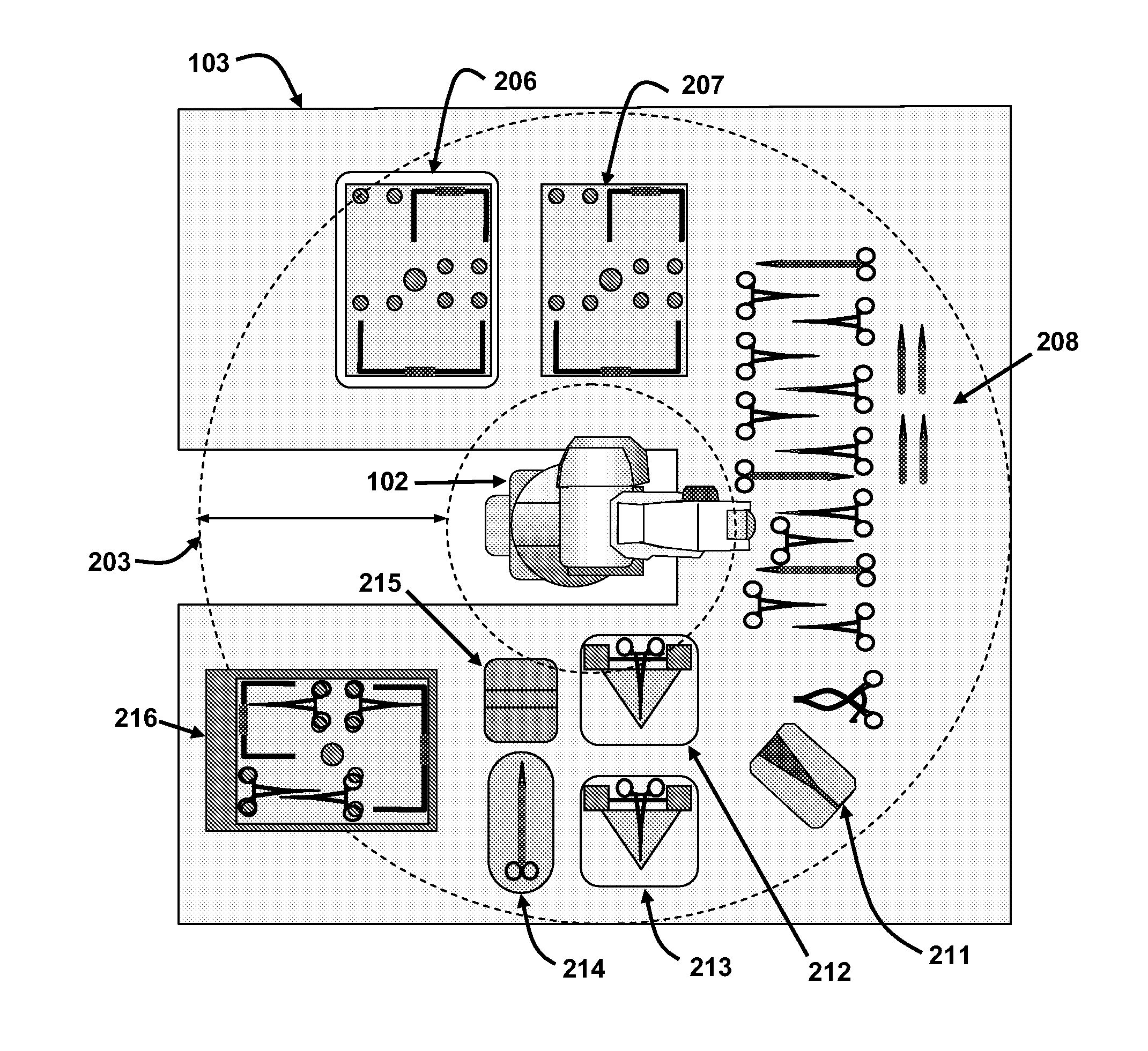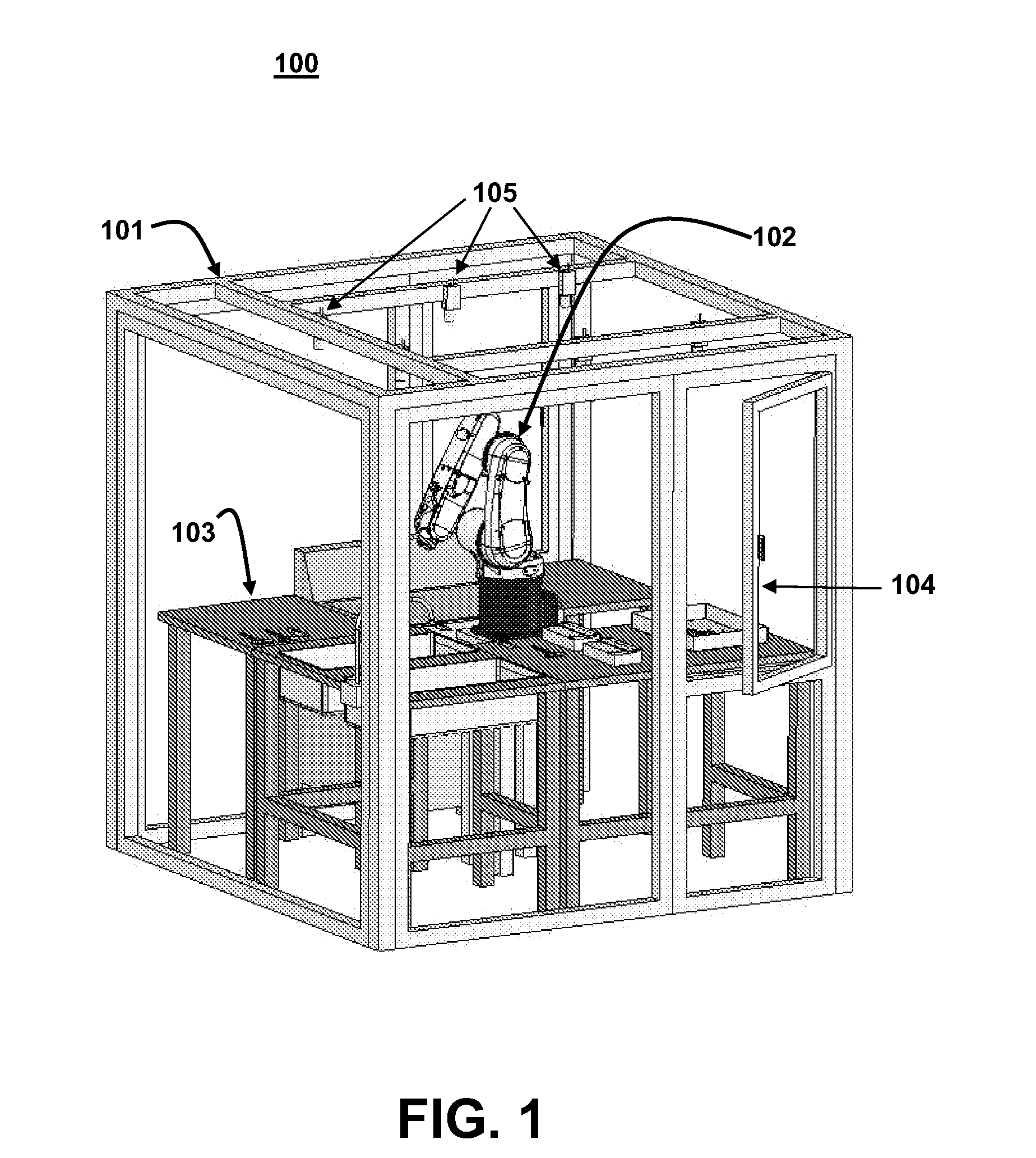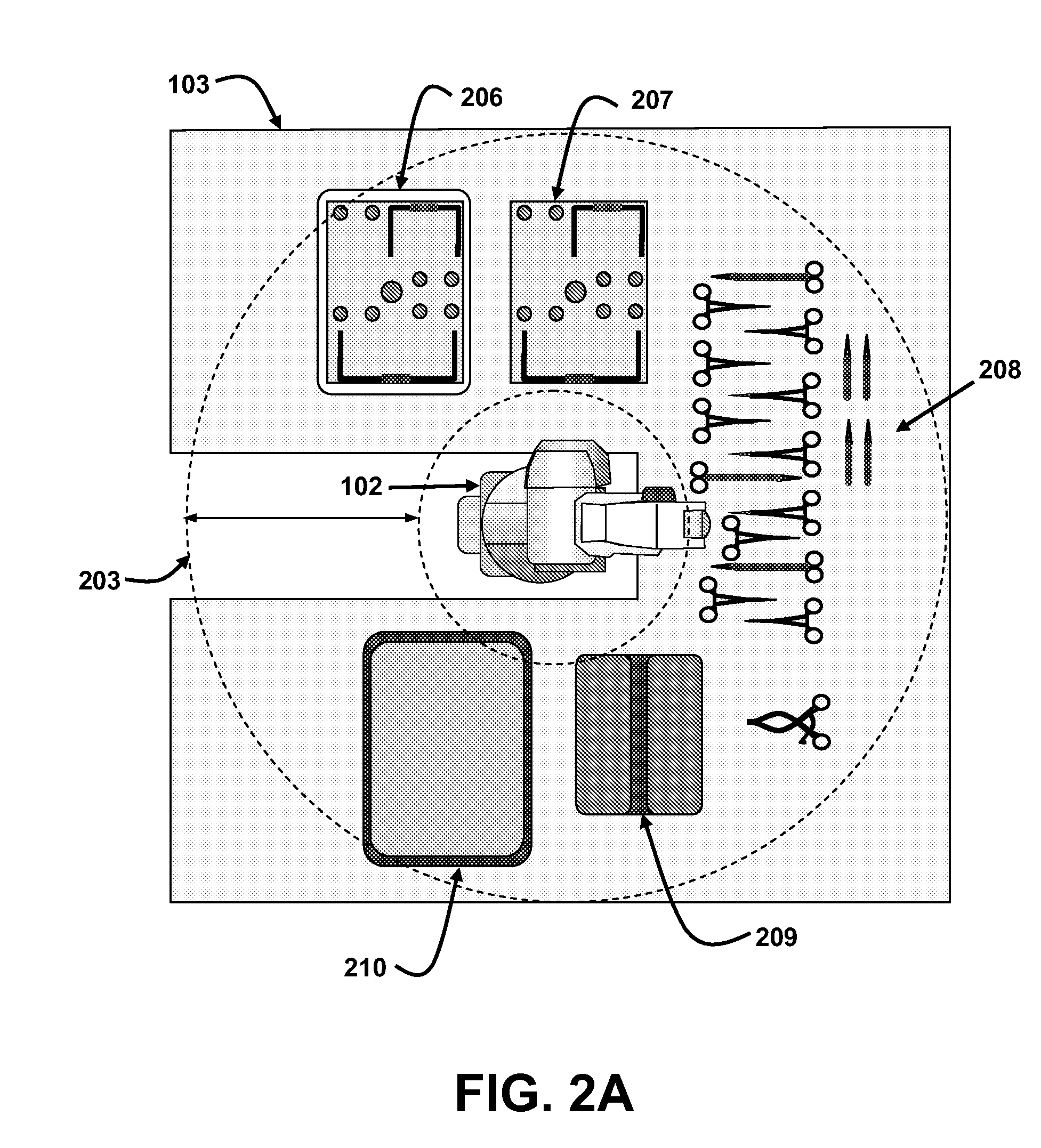Automated robotic system for handling surgical instruments
a robotic system and surgical instrument technology, applied in the direction of rigid containers, article separation, material analysis, etc., can solve the problems of instrument being left in the body cavity erroneously, significant complicating the count, and undercounting in css, so as to reduce the number of dirty instruments, facilitate the various loading and unloading processes, and increase the cleaning efficiency of the washer/disinfector
- Summary
- Abstract
- Description
- Claims
- Application Information
AI Technical Summary
Benefits of technology
Problems solved by technology
Method used
Image
Examples
Embodiment Construction
[0078]FIG. 1 illustrates an automated, robotic CSS workcell system 100 under a preferred embodiment. System 100 comprises an enclosure 101 having one or more openings 104 for accessing a workspace surface 103. While the robotic workcell enclosure 101 is illustrated as a generally square, or rectangular shape, enclosure 101 could be designed with a cylindrical shape mimicking the robot's operational envelope 203. Additionally, the height of the enclosure could be minimized to allow vertical stacking of multiple robots in situations where floor space is at a premium.
[0079]Robotic arm 102 is preferably located in the center of the workspace surface 103, and is responsible for performing various manipulations to instruments and / or equipment described below. One example of a robotic arm suitable for use in system 100 is an Adept Viper™ s650 6-axis arm produced by Adept Technologies, Inc. Other suitable arms include “VS” or “VM” series 6-axis arms from DENSO Robotics, or Pro Six PS3 by Ep...
PUM
 Login to View More
Login to View More Abstract
Description
Claims
Application Information
 Login to View More
Login to View More - R&D
- Intellectual Property
- Life Sciences
- Materials
- Tech Scout
- Unparalleled Data Quality
- Higher Quality Content
- 60% Fewer Hallucinations
Browse by: Latest US Patents, China's latest patents, Technical Efficacy Thesaurus, Application Domain, Technology Topic, Popular Technical Reports.
© 2025 PatSnap. All rights reserved.Legal|Privacy policy|Modern Slavery Act Transparency Statement|Sitemap|About US| Contact US: help@patsnap.com



